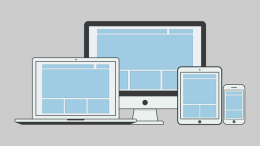This article is sponsored by Jabil, a US-based, global manufacturing services company headquartered in St. Petersburg, Florida. It reflects the views of the author, not ReadWrite’s editors.
John Van Akkeren is president of Radius Product Development, a Jabil subsidiary.
Jabil is a proud sponsor of the e2e Conference, Oct. 13-14 in Silicon Valley. Get your tickets now!
The journey from product idea to commercialization is full of opportunities, challenges, risks and rewards. The best road to a successful, end-to-end product introduction is paved with constant customer touchpoints and a deep empathy for their wants and needs.
Sounds basic, but in reality, staying in lockstep with customers is an iterative process that must be integrated into every phase—from product planning, discovery, design and development to manufacturing and delivery.
Boosting The Customer’s Voice
Here are 10 tips for making sure your customer’s voice comes through loud and clear:
Consumers Hold The Power
Make no mistake: Your ultimate customer isn’t the retailer dangling the promise of shelf space in front of you. It’s the consumer who actually uses your product. Speak to them, listen to them and innovate for them. Most important, make an emotional connection with them.
Dial Direct
Today, product makers have more direct access to consumers than ever before, which is a shift from when everything was tied to distribution. This shift enables newfound freedom to put consumers first and relieves the pressure from retailers. Remember, happy customers talk and retailers love to listen and have a product story to tell.
It’s A Two-Way Street
Online ratings, reviews, and referrals carry enormous weight. So, as you’re basking in the glow of a great review, don’t overlook the damage that could be caused by negative critiques. Be sure to acknowledge praise but most importantly, respond quickly and efficiently to any customer concerns or problems. The first moment of truth is no longer on the shelf.
Forego The Features Arms Race
Consumer-buying practices are no longer driven by who ticks off the most feature checkboxes. So, avoid the race to produce a product overloaded with features. Instead, figure out which features deliver the most value and a compelling experience for customers.
What do they care about most? If we’re talking fitness wearables, for example, are they looking for fashionable, sporty designs that demonstrate commitment to a healthy lifestyle? Technology has enabled product makers to add more features—but that doesn’t mean you should. Simple, beautiful design that intuitively communicates the technology can become the next iconic product that everyone has to have.
Not So Easy-Peasy
What’s easy for one person may be difficult for another, so “easy to use” has become a meaningless statement. Your product requirements list should have tangible, actionable insights based on what most engages your customers. If you don’t know, then talk to consumers to find out.
Focus Groups Are So Mad Men
Focus groups play better on TV than as a product-development strategy. Instead, embrace ethnography to observe consumers interacting with products in their actual environments to uncover unarticulated needs and insights for innovation. Follow that with in-home user testing (IHUT), where consumers take home your product, use it for days to weeks, and chronicle their experiences. It’s really the best way to get real-time feedback about how to optimize your product’s value proposition.
Cost + Value = Relationship
Deciding the final product price shouldn’t require a divining rod if you understand what your customers value most. Value can come from finish, quality and a differentiating user experience. Value drives cost, so never lose sight of the relationship between the two.
Brand Is King
Never, ever trade on your brand equity to sell higher volumes at lower prices: It’s a short-term strategy that you’ll pay for at some point. Let’s face it—having the “cheap but crappy” brand isn’t a sustainable business strategy. Be a good brand steward and say “No” to all things that could affect your brand in a negative way. The best brand protection is to build products with your customer in mind as everything else emanates from that crucial point of view.
Get Real About Your Production Volume
Don’t try to lure a manufacturer into working with you by overestimating product volumes. You could end up with the wrong partner working toward the wrong goals. And, since volume correlates to product price, you could end up with a price point that negatively impacts your development cycle and, ultimately, customer relationships.
It’s Never Over
Having an ongoing conversation with your customers means keeping them in the loop from day one and continuing after your product ships. You and your customer will always find things, no matter how rigorous your testing, so make it easy to provide feedback and make them part of the story.
Some companies see the constant customer feedback loop as a barrier to rapid product introductions. Instead, leveraging every customer touch point offers an opportunity to identify insights for improving the design, enhancing value, and elevating your brand. Integrating the voice of the customer in an end-to-end product development strategy and is key to transforming a great idea into a fully commercialized product that continually delights customers.
Photo courtesy of Shutterstock
To learn more about integrating customer feedback into innovative hardware products, attend the e2e Conference, Oct. 13-14 in Silicon Valley. Get your tickets now!
This article is sponsored by Jabil, a US-based, global manufacturing services company headquartered in St. Petersburg, Florida. It reflects the views of the the author, not ReadWrite’s editors.





















